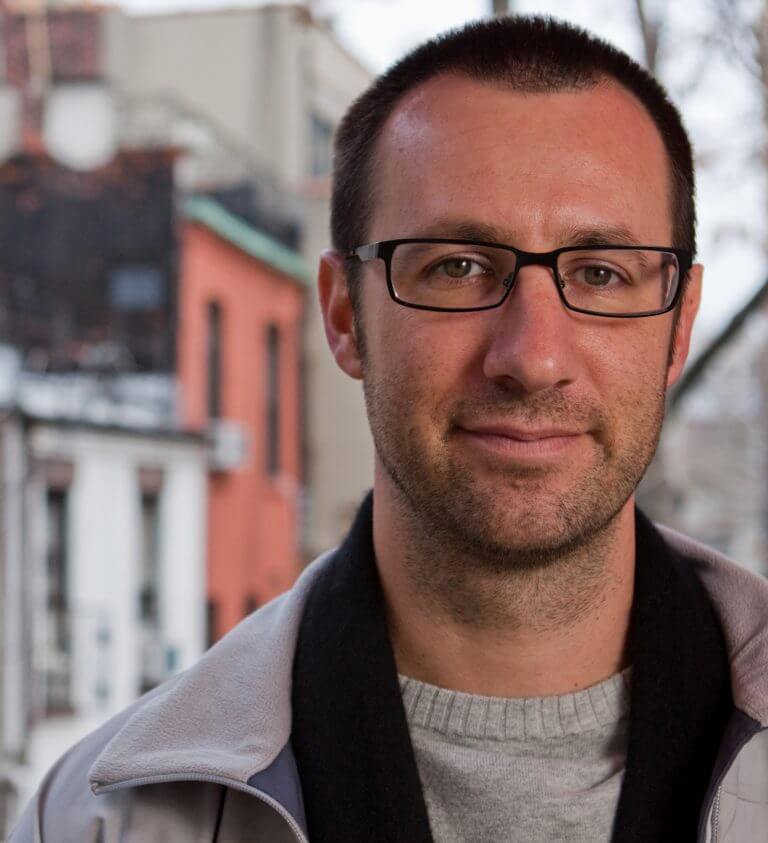- January 30, 2018
- By Liam Farrell
It’s a place that seems borne of a dime-store novelist’s imagination: a luxurious and mysterious Russian hideaway bordering a quaint, all-American town. But it’s real, and a UMD journalism project recently found a way to use 21st-century technology to get a bird’s-eye view of it.
 Last fall, John Meils ’17 M.Jour. was trying to think of a new angle on the diplomatic scuffle that shuttered Russia’s 45-acre waterfront property outside of Centreville in Queen Anne’s County. The compound became an international flashpoint after the Obama administration ordered it closed in December 2016, following allegations of Russian involvement in the presidential election; Russian President Vladimir Putin retaliated by expelling hundreds of Americans.
Last fall, John Meils ’17 M.Jour. was trying to think of a new angle on the diplomatic scuffle that shuttered Russia’s 45-acre waterfront property outside of Centreville in Queen Anne’s County. The compound became an international flashpoint after the Obama administration ordered it closed in December 2016, following allegations of Russian involvement in the presidential election; Russian President Vladimir Putin retaliated by expelling hundreds of Americans.
Meils was inspired by how a Russian activist had used a drone to dramatically show the opulent getaways of Prime Minister Dmitry Medvedev and thought there was a similar opportunity on the Eastern Shore.
“It just was an angle, literally and figuratively, that hadn’t been covered,” Meils says.
So teaming up with Jamal Francis M.Jour. ’17 and Philip Merrill College of Journalism lecturer Josh Davidsburg ’01, Meils got the OK from the U.S. Department of State—“I was shocked by that,” he says—to survey the property. Since Maryland law requires drone operators to maintain line of sight on their aircraft, Meils and company had to take to the water in a boat.
Using two drones, one owned by Davidsburg and the other by Francis, they got comprehensive, airborne footage of a spacious retreat with two stately mansions, 10 guest bungalows, four tennis courts, two pools, a boathouse, a private beach and even a soccer field. The footage was used for a Capital News Service story and available to more than 50 partner news organizations like the Associated Press, Washington Post and Baltimore Sun.
Davidsburg, who has a license for drones, says the exercise was the type of journalistic innovation critical for students going out into a technologically advanced world.
“Getting them out there and having them use it while supervised is an awesome opportunity,” he says. “News organizations using a drone is safer than using a helicopter. There is a place for drones in journalism.”
Francis says the project offered a chance to practice new skills with his drone.
“It exposed me to a whole new situation I never thought I’d have access to,” he says. “We had the resources through the university to make John’s vision a reality.”
Meils also dug into property records, finding that the compound, originally owned by John Jakob Raskob, who built the Empire State Building, was acquired by the Soviet Union in 1972. Although locals say the Russians kept to themselves, the Obama administration contends the site was used for intelligence purposes, and the State Department owns the land right next door. One resident told Meils that the FBI would stare through binoculars across the river at the Russians.
“Anecdotally, it seemed very much like a retreat,” Meils says. “(But) these folks were watched by us and their own people constantly.”
Photo and Video Courtesy of Jamal Francis, Josh Davidsburg, and J.F. (John) Meils